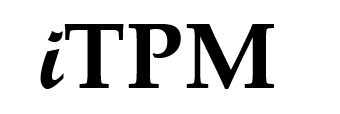Does CPG company size impact the technical requirements for a TPM solution?
The short-answer is yes. While the basics are similar across CPG companies of all sizes, technical requirements actually are different based on company size.
Small company Advantages
- Privately held: Private companies do not need to be compliant with the regulations and reporting requirements for public companies. SSAE-16 compliance may not be a requirement in the TPM RFI or RFP.
- May not have a parent company dictating policy: Smaller companies can be more flexible in accepting the technology of the TPM solution. Large global companies can have technology platform standardization requirements. Smaller, non-global organizations may evaluate the pro and cons of the TPM vendor’s technology based on its own merits.
- May not have currency and multi-language requirements, multi-national reporting requirements.
- Fewer users results in less complicated training & roll-out.
- Scalability of TPM solution is typically not an issue, because there are fewer items and customers to manage.
- Sometimes promotions are also simpler, which can simplify the implementation project and use-cases.
Small company Disadvantages
- Limited budget to implement TPM solutions.
- Fewer IT resources for integration. Sometimes this is the overriding factor that prevents smaller companies from implementing a TPM solution. Integrating a stand-alone TPM solution to an ERP can require months of IT resources. This is something that can be in short-supply for any CPG company, and especially in smaller companies.
- All Stakeholders have less time to use the TPM solution, because each person’s job includes tasks beyond trade promotion. This may not seem like a big challenge, but it is. The success of a TPM solution has more to do with the actions of the end user than the actual features of the software. Users must have enough time to learn and use the new software while still using the old workflow for legacy promotions and deductions. Users must take on the extra tasks of the new TPM software while still doing the 'day job'. This requires time, a precious commodity in today's fast-paced, under-staffed world.
- More time to generate an ROI from the TPM solution. For stand-alone TPM solutions, there is a minimum effort and cost to keep a TPM solution integrated to the ERP. A company’s trade spend may not be enough to pay back the investment quickly.
These are just a few observations from hundreds of RFIs and RFPs over the last 30+ years in the CPG industry. For insights on how other ways CPG company size impacts theTPM RFP requirements, go to our www.cgsquared.com TPM blog.
Alex Ring
CG Squared, Inc.
